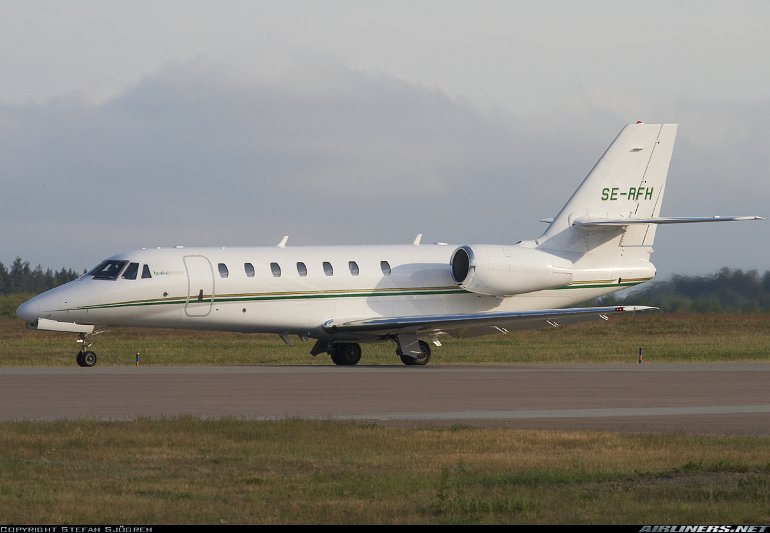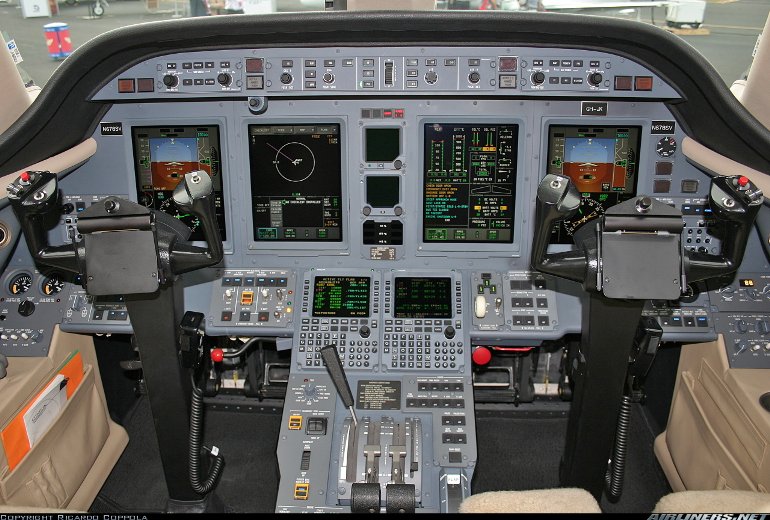Aircraft Technical Data
Cessna 680 Citation Sovereign


| Details | |
| Country of Origin | United States of America |
| Type | Mid size corporate jet |
| History | Cessna is developing the new Citation Sovereign mid size corporate jet to meet what it sees as a large replacement market for ageing business aircraft such as the Falcon 10, Westwind and Sabreliner. Cessna market research showed that of the 1760 or so mid sized corporate jets in service worldwide almost half are early generation aircraft which it felt would come up for replacement in the coming years. Its answer to this emerging market is to develop the Citation Excel based Model 680 Citation Sovereign, which it revealed at the October 1998 NBAA exhibition in Las Vegas. Certification is planned for late 2003 with customer deliveries getting underway in the first quarter of 2004. The Sovereign is based on the Excel's fuselage and shares some common systems but features an all new wing and numerous other differences. Cessna looked at an all new fuselage cross section for the Sovereign but opted instead to stretch the Excel fuselage (by 1.5m/4.9ft) to keep down costs and reduce development time. Even so Cessna claims the Sovereign's eight seat cabin is the largest in its class with 40% more volume than the Bombardier Learjet 60 and 18% more than the Raytheon Hawker 800XP. Power for the Sovereign will be from two FADEC equipped 25.3kN (5690lb) Pratt & Whitney Canada PW-306Cs. The PW-306 was selected in part as it also powers the 328JET regional airliner which should give maintenance and reliability benefits because of the airline industry's more rigorous operating demands. The mildly swept wing is an all new, supercritical design, based on Cessna's experience with the Citation III/VII, V and X. The horizontal stabiliser is also slightly swept. The Sovereign will enjoy good field performance, being able to operate from 1220m (4000ft) runways at max takeoff weight. Another feature is trailing link main undercarriage. The Sovereign will be equipped with a Honeywell Epic CDS avionics suite, with four 20 x 25cm (8 x 10in) colour flat panel liquid crystal displays, a digital dual channel autopilot and flight director, dual long range navigation systems and dual attitude/heading reference systems. Other standard equipment will include TCAS and an EGPWS (enhanced ground proximity warning system). The first flight of the prototype was made on February 27, 2002. The first production model is scheduled to fly by July 2002 |
| Powerplants | Two 25.3kN (5690lb) Pratt & Whitney Canada PW-306C turbofans. |
| Performance | Max cruising speed 821km/h (444kt) at 35,000ft. Certificated ceiling 47,000ft. Time to 43,000ft 26min. Takeoff distance at max takeoff weight 1220m (4000ft). Design range 5222km (2820nm) |
| Weights | Not published at late 2001 except design max payload weight 1134kg (2500lb), full fuel payload 726kg (1600lb). |
| Dimensions | Wing span 19.24m (63ft 1in), length 18.87m (61ft 10in), height 5.85m (19ft 2in). Wing area 47.4m2 (510sq ft). |
| Capacity | Flightcrew of two. Typical seating for eight passengers in a double club arrangement, max seating for 12. |
| Production | First customer deliveries scheduled for the first quarter of 2004. 79 advance orders announced at NBAA in October 1998. |
| Related Links | Cessna 680 Citation Sovereign |
The backbone of this section is from the The International Directory of Civil Aircraft by Gerard Frawley and used with permission. To get your own copy of the book click here. |
|








